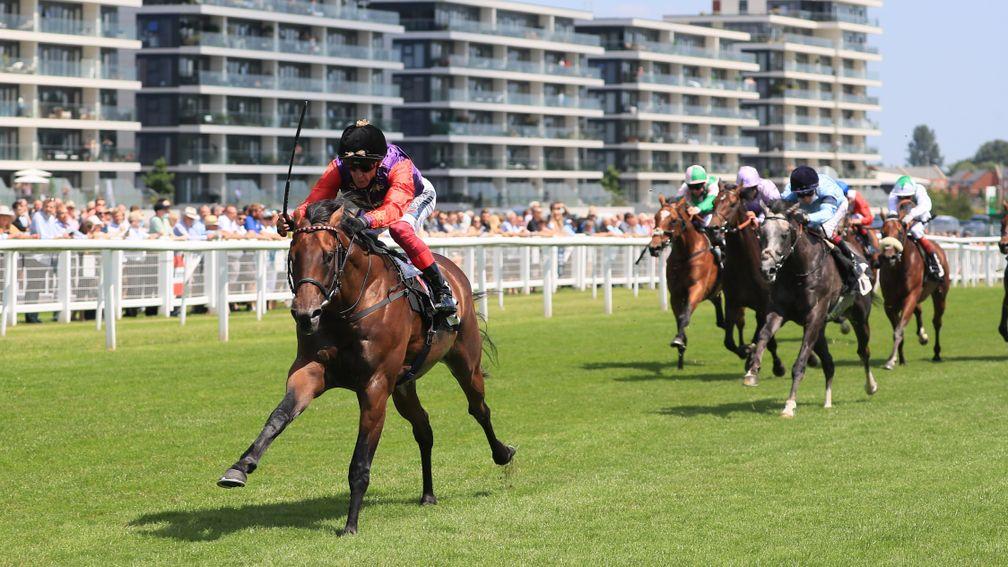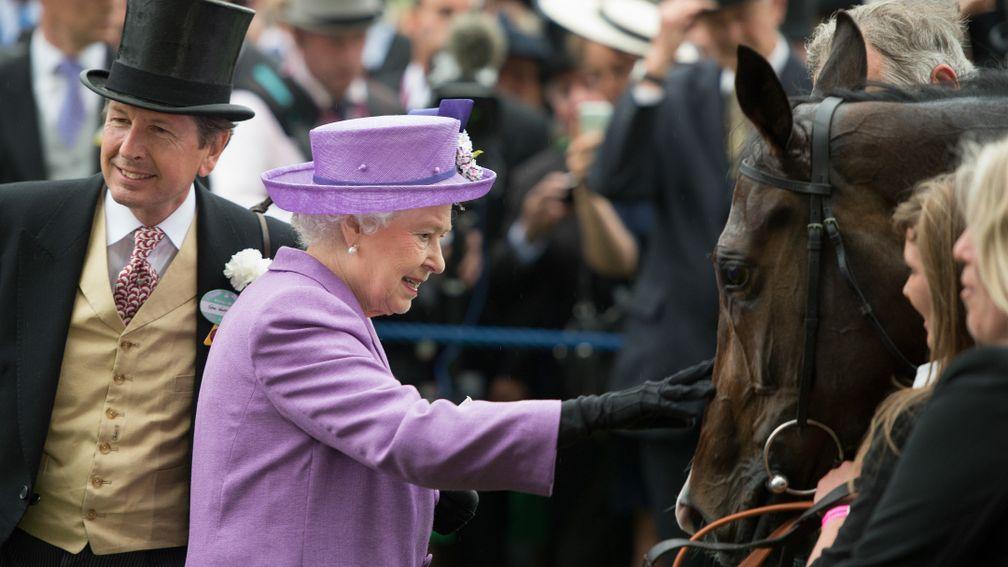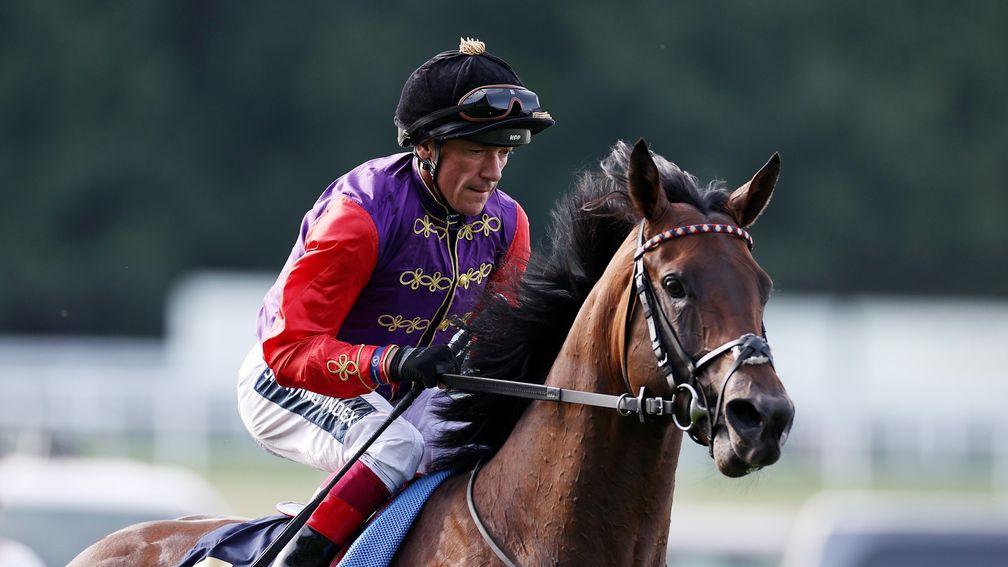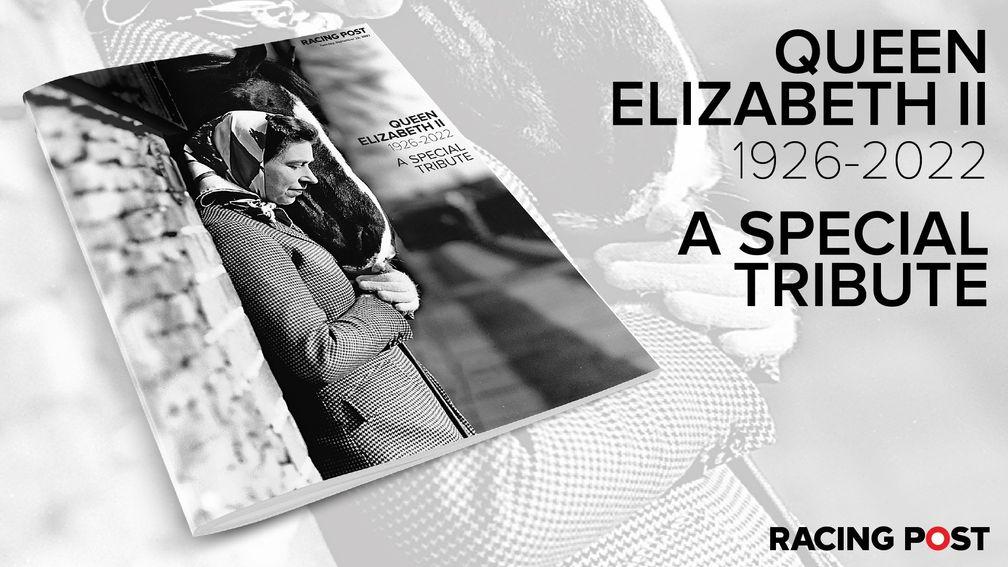The Queen enjoyed a record-breaking year in 2021 - and her team's getting better
Julian Muscat highlights the factors behind the Royal Studs' recent resurgence

Tangible gains posted by the Queen's racehorses last year attest to her enduring passion for racing across eight decades. The royal haul of 36 winners on the Flat in 2021 was the most productive on record, bettering her previous-best score of 30. The same was true of her prize-money haul of £584,399.
These advances came at a time when the Queen might already have been expected to scale back her bloodstock interests. Typically, long-standing owner-breeders prune the numbers in their advancing years. Given that it takes four years from a mare being bred to her progeny racing as a three-year-old, they may not be around to witness the result of that union.
However, the Queen went the other way. She leaves the Royal Studs with more broodmares than it has ever housed, which in turn means that the annual foal crop is proportionately larger. As much as anything, this is the springboard from which the Queen vaulted to a series of personal bests with the royal horses in 2021.
Other underlying influences have combined to transform the Queen's fortunes since the new millennium's dawn. She was 75 when John Warren succeeded his father-in-law Lord Carnarvon as her bloodstock and racing adviser in 2001. At that time the Royal Studs were in the doldrums, itself a consequence of unrelated constraints placed upon them.
It was a time when the Troubles in Ireland had subsided to the point where the royal mares could resume their visits to stallions based in that country. That traffic had been suspended for 30 years on security grounds. It coincided with an era when stallions based in Ireland were infinitely more successful than their counterparts in Britain, and thus placed the Royal Studs at a significant disadvantage.
This is best illustrated by a reflective look at the leading sires table of 1990. Only four of the top 20 sires were based in Britain, and that was no rogue year. It was an accurate snapshot of the day.
In the circumstances, it made no sense for the Queen to spend significant sums from her private purse on integrating new broodmares into the fold when they could not be mated to best effect. The only way forward was for her to persist with what the Royal Studs had until such time as restrictions might be lifted.
Warren's appointment in 2001 coincided with an easing of those restrictions. Having undertaken a comprehensive review of existing bloodlines, he sat down with the Queen to chart a new course. The introduction of fresh blood was long overdue. That process was still evolving on the Queen's passing this month, but the scale of the Royal Studs' transformation has been striking.
Of 35 broodmares resident on the royal pastures at the start of the year, 26 descended from female lines that were not in the stud when Warren took office. Just nine remained from old-established lines.

The more recent additions hail from diverse backgrounds. They descend from lines cultivated by some of Europe's foremost breeding establishments. Among them, no less than seven originate from the Aga Khan's nurseries. There are two mares each from families identified with Alec Head and the Wildenstein family together with one each from the Wertheimer brothers and Khalid Abdullah's Juddmonte Farms.
This diversity is what every aspiring breeding venture requires if it is to remain relevant. An over-reliance on older bloodlines, which don't last forever, leads to an unhealthy distillation of the genetic pool. In this respect a stud is like a vineyard: pruning, investment and care are vital to keep the vines strong and productive.
Such routine maintenance at the Royal Studs had been effectively mothballed until Warren took the reins. A look back at the status quo when he was appointed highlights how much there was to do to bring the studs into the 21st century, while comparisons with how the Queen's horses fared last year demonstrates the extent of those gains.
In 2001 the royal silks visited the winner's enclosure just six times. This nadir repeated itself the following year and barely improved thereafter: the Queen's annual tally would not reach 20 until 2009.
Those six winners in 2001 all descended from bloodlines that had been ensconced at the Royal Studs for many generations. Overall there were five individual winners from 15 individual runners, yielding a strike-rate of 33 per cent. They accrued a prize-money haul of £142,105.
Twenty years later, and with several new broodmares now assimilated, the picture looked very different. The Queen's 36 winners in 2021 were registered by 25 individual horses. Of those 25, 13 originated from female lines brought into the studs since 2001, as against 12 from old-established lines. The broodmare band's new inmates are plainly making their mark.
Furthermore, those 25 individual winners emerged from 42 individual runners. This equates to a strike-rate of just under 60 per cent – nearly double that achieved in 2001. No less than eight of them earned a Racing Post Rating in excess of 100.
Among them were two individual Group-race winners (Light Refrain and Reach For The Moon) and one Listed winner (Tactical). Light Refrain and Tactical are both products of the new bloodlines. Conversely, the combined cast of 2001 could not contrive a single black-type victory.
In Reach For The Moon, the Queen started the year with a front-line, homebred candidate for the Derby in her Platinum Jubilee year. It was not to be, but the fact the colt even entered the Derby equation was noteworthy. The last royal homebred to contest the Derby was Church Parade back in 1981.

This contrast in racecourse achievement between 2001 and 2021 is stark. And there are other manifestations of the superior quality of contemporary royal runners to the class of 2001. From that year the Queen experienced a seven-year Royal Ascot drought until Free Agent won the Chesham Stakes in 2008 – since when she had four further winners, the last of them from Tactical two years ago.
This upward curve is mirrored by the Queen's success in Pattern races, which represent the definitive litmus. In the ten-year period from 2001 the royal silks prevailed in just one Pattern race, and that came in a Group 3 in Germany. However, in the subsequent decade there have been 17 Pattern-race triumphs – almost all of them in Britain, where the competition is at its keenest.
As much as the raised quality of broodmares within it, the Royal Studs' recent renaissance has been abetted by raw sire power. This was one of the creeds of Prince Khalid's Juddmonte Farm in its formative years.
Prince Khalid followed a policy of breeding his mares to the best available sires at all times, fortified by the belief that their superior genes would instantly or eventually rub off on the mares they were deployed on. Similar influences are now at play within the Royal Studs, where the use of Europe's leading sires is far more pronounced than it was 20 years ago.
The source of stallion power has changed markedly over the last two decades. Ireland held sway in 2001, but British-based interests, headed by Prince Khalid and the Maktoum brothers, have since made significant inroads. Each country is now blessed with top-class sires. Had this been true during the Troubles, the chances are the Royal Studs' misfortunes would not have been so pronounced.
British-based sires Dubawi, Frankel and Kingman can lay claim to a place among the top half-dozen sires in Europe. The Queen has used them extensively on her broodmares: Frankel is the sire of last year's aforementioned Group 3 winner Light Refrain, for whom high aspirations are held now that she has joined the royal broodmare band.
This bodes well for the future. Light Refrain is one of a raft of young broodmares with the lineage to advance the royal cause still further. The Queen's Gold Cup winner Estimate remains relatively young at 13 and may yet emulate her own dam Ebaziya, who bred three other Group 1 winners besides Estimate.
Then there is Approximate, Estimate's daughter by Dubawi, who is just five. With a fair following wind she has several more productive years ahead of her.
There is also Castle Lady, winner of the 2019 Poule d'Essai des Pouliches. She has a yearling colt by Dubawi, was sadly barren to him this year and visits Frankel in 2023. In essence, there are several sources from which the next royal Group 1 winner might emerge.
Of course, it remains to be seen how the Royal Studs will evolve in the post-Queen era. The breeding capacity of Hamdan Al Maktoum and Prince Khalid's studs is now much reduced following their own recent deaths, and such a fate may befall the Royal Studs.
Even in that event, however, it is the perceived lesser broodmares who will be sold on, leaving more illustrious members of the band to carry the torch forward. These may prove famous last words since nothing is certain in the business of breeding horses, but the prospects of the Royal Studs throwing up a top-class racehorse should not be overtly diminished.
In many ways this is the Queen's passing gift to the sport she loved. Should the revived Royal Studs turn out horses who do the monarchy proud, in the process eliciting a sense of national rejoicing at their success, the chances of them enduring for another generation will be all the greater. The sport of kings is united in that aspiration.
2001
6 wins
£142,105 in prize-money
5/15 individual winners/runners
33% strike-rate
0 Group/Listed winners
1 Horse with a Racing Post Rating of 100+
2021
36 wins
£584,399 in prize-money
25/42 individual winners/runners
60% strike-rate
3 Group/Listed winners
8 Horses with a Racing Post Rating of 100+
Click here for a detailed look at the Queen's achievements in racing
In Tuesday's Racing Post

Published on inNews
Last updated
- How to add Racing Post as a preferred news source in Google
- Moray Smith Live: put your questions to the pro punter for a special Christmas Q&A
- It's your LAST CHANCE to get 30% off Racing Post+ for a whole year - don't miss out on all our fantastic content!
- 'Absolute nonsense' to claim Haiti Couleurs was out of his depth in Betfair Chase
- Catterick: 'I loved him straight away' - hurdles debutant Indian River makes winning start for Adrian Keatley
- How to add Racing Post as a preferred news source in Google
- Moray Smith Live: put your questions to the pro punter for a special Christmas Q&A
- It's your LAST CHANCE to get 30% off Racing Post+ for a whole year - don't miss out on all our fantastic content!
- 'Absolute nonsense' to claim Haiti Couleurs was out of his depth in Betfair Chase
- Catterick: 'I loved him straight away' - hurdles debutant Indian River makes winning start for Adrian Keatley